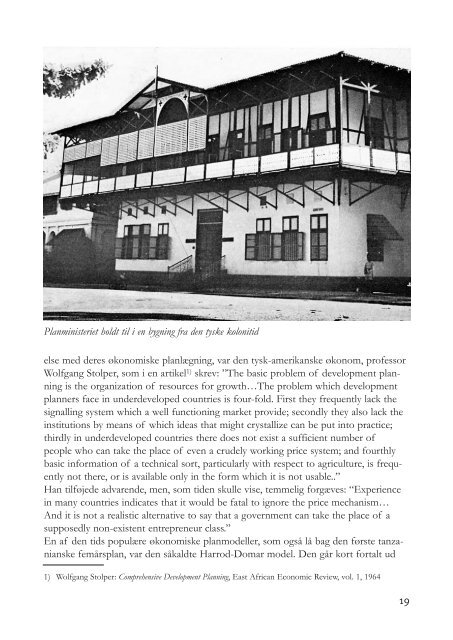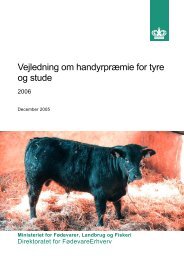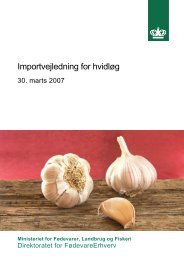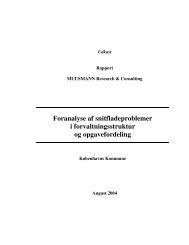Hele publikationen i PDF
Hele publikationen i PDF
Hele publikationen i PDF
You also want an ePaper? Increase the reach of your titles
YUMPU automatically turns print PDFs into web optimized ePapers that Google loves.
Planministeriet holdt til i en bygning fra den tyske kolonitid<br />
else med deres økonomiske planlægning, var den tysk-amerikanske økonom, professor<br />
Wolfgang Stolper, som i en artikel 1) skrev: ”The basic problem of development planning<br />
is the organization of resources for growth…The problem which development<br />
planners face in underdeveloped countries is four-fold. First they frequently lack the<br />
signalling system which a well functioning market provide; secondly they also lack the<br />
institutions by means of which ideas that might crystallize can be put into practice;<br />
thirdly in underdeveloped countries there does not exist a sufficient number of<br />
people who can take the place of even a crudely working price system; and fourthly<br />
basic information of a technical sort, particularly with respect to agriculture, is frequently<br />
not there, or is available only in the form which it is not usable..”<br />
Han tilføjede advarende, men, som tiden skulle vise, temmelig forgæves: “Experience<br />
in many countries indicates that it would be fatal to ignore the price mechanism…<br />
And it is not a realistic alternative to say that a government can take the place of a<br />
supposedly non-existent entrepreneur class.”<br />
En af den tids populære økonomiske planmodeller, som også lå bag den første tanzanianske<br />
femårsplan, var den såkaldte Harrod-Domar model. Den går kort fortalt ud<br />
1) Wolfgang Stolper: Comprehensive Development Planning, East African Economic Review, vol. 1, 1964<br />
19

















